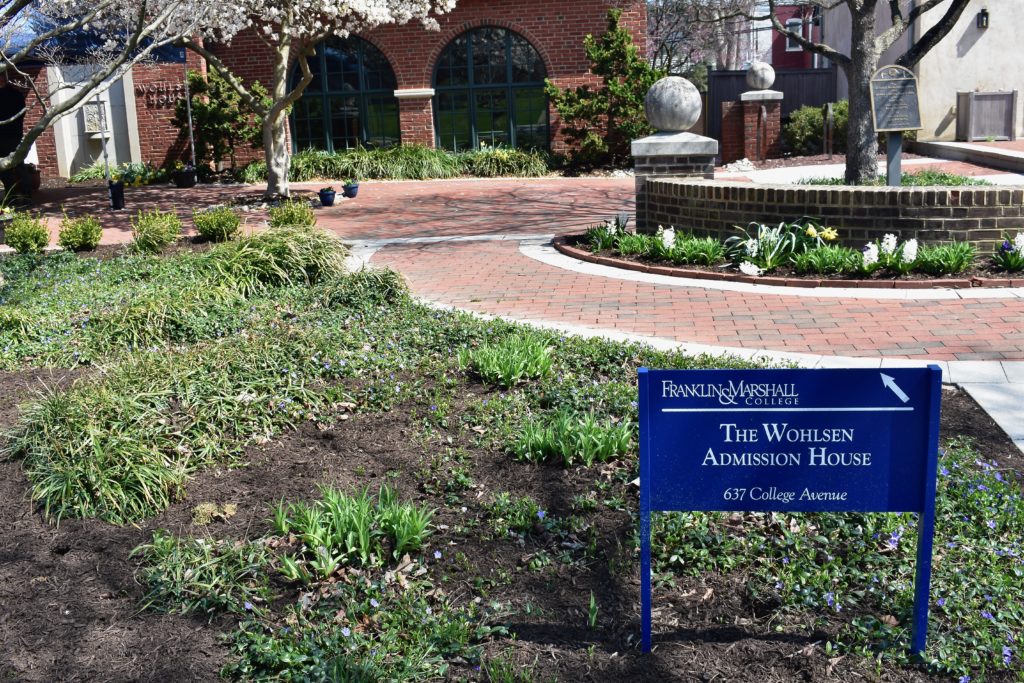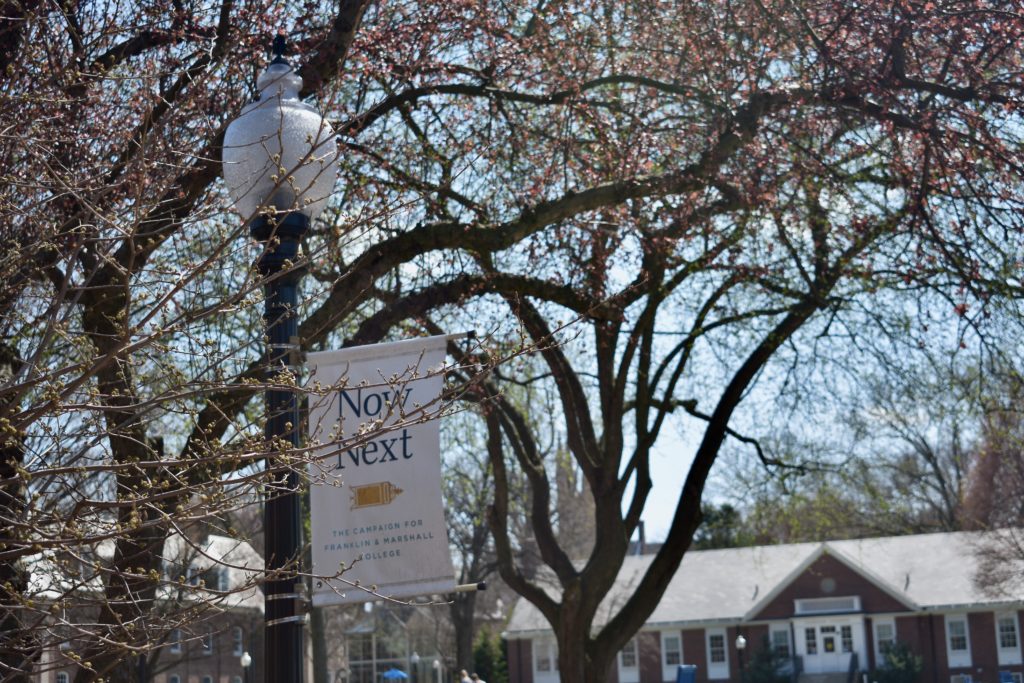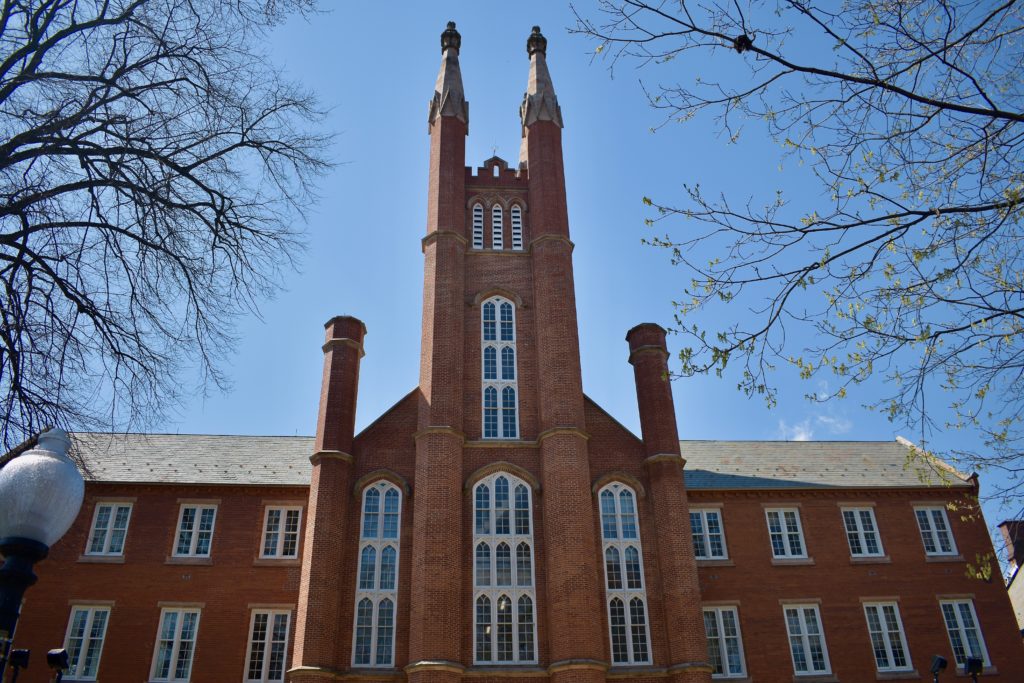By Daniel Robillard || Investigative Reporter
This story is the second article in a series by The College Reporter that seeks to shed light on the financial challenges facing F&M today.
In what was perhaps a too-perfect foreshadowing of Franklin & Marshall’s financial future, a classical rendition of the song “Everybody Hurts” played as background music as attendees joined the Zoom event for the spring Budget Priorities Committee (BPC) meeting on Wednesday. The picture that College officials painted of F&M’s financial situation coming out of the COVID-19 pandemic was largely bleak. “The good news is that we are not going under,” F&M president Barbara Altmann said at the meeting, pointing to the fact that the entire education industry had been hurting badly by the pandemic. And while F&M seems to be in a position to recover from the $15 million hole blasted into its budget by the global pandemic, each of the speakers at the meeting on Wednesday stressed that this was only likely to be successful if the College was able to return to a full, de-densified residential experience in the fall—something that is still far from certain.
Even if such a return in the fall is possible, the budget for the upcoming year, and F&M’s financial position going forward, still remains uncertain. Michael Clapper, Chair of the BPC and Associate Professor of Art History, noted that the budget process was still running behind, as a final budget for next year had still not been approved by the Board of Trustees, despite College officials having emphasized the importance of approving a budget sooner rather than later at the fall BPC meeting. The delay, Clapper and Vice President for Finance and Administration Mike Todd said, is due to a number of still uncertain budget determinants. At present, F&M’s budget and financial future are shrouded in ambiguity due to previously unanticipated costs for the current semester, the availability and timeline of potential federal relief funding, costs of major events (such as the plan to hold Commencement), and—perhaps most importantly—the size of the upcoming first-year class, the Class of 2025.
Admissions Changes
F&M officials at the meeting on Wednesday stressed that the College’s financial situation for the coming year would be largely dependent on the enrollment size of the incoming first-year class. “It’s a challenge because we’re waiting on decisions of seventeen-year-olds to decide our budget fate,” Vice President for Enrollment Management Jimmie Foster said. Foster also cautioned attendees that the incoming first-year class will almost certainly be substantially smaller than in recent years.

Applications this year fell well below the totals for 2019 and 2020, although the Administration stressed that they were still the third-highest in F&M’s history. A smaller class size inevitably means less tuition revenue, which is by far the largest source of income for the College. In the financial year 2020, net tuition revenue—which is calculated by subtracting financial aid from tuition collected, not including room and board—made up over 60% of F&M’s total revenue for the year. As a result, the College plans to be “more efficient when it comes to net tuition revenue,” Foster said. This will mean looking toward filling future classes with more students who can pay the full price of tuition, potentially fundamentally shifting the composition of the students that come to F&M.
Foster also acknowledged that the College has taken a significant hit when it comes to international students from China, a key pool of students for F&M’s admissions strategy in previous years. Last year, the total applicant pool from China was almost 1,000 students. This year, F&M received just over half of that total, leaving a large void from an applicant pool that by-in-large paid the full sticker price of tuition. “There was a big drop-off there and that forced us to have to look more closely at our domestic students to maybe fill some of those spaces,” Foster said.
A Complicated Financial Past
College officials made it clear that without the pandemic, F&M would have been in the first year of a prosperous recovery from the financial deficit it faced in the 2018–2019 academic year. As they have in several past public BPC meetings, administration officials emphasized the financial strain that the College had been put under by previous unsustainable financial practices, but danced around mentioning specifics or pointing any fingers at past administrations.
The endowment was a key problem area that F&M administrators have pointed to as needing increased attention. In previous years, the College had been taking significant draws from the endowment, putting F&M in a position where its endowment largely stagnated while most peer institutions had nearly doubled theirs. Todd characterized this approach to spending as “eating tomorrow’s lunch, today.” Continuing this practice would get F&M into the colloquial “death spiral,” Todd added. “We borrow, then we have incrementally less next year we borrow more and it just promotes a drawdown of the endowment. We’ve got to stay off that treadmill.”

Todd also highlighted F&M’s recent progress, saying that the College has been able to exercise more spending discipline over the past two years, something that has not been easy in a global pandemic that has been disastrous across the higher education industry. And while F&M still has a long way to go to bring the endowment consistently under 5%, a goal that Todd said was an ideal target, it has managed to improve from the extreme amounts that it had been pulling in recent years. “Some recent historical dramas have just been unsustainably high—you cannot pull that much out every year,” Todd said on Wednesday.
The “historical dramas” that Todd mentioned may have referred to two successive F&M administrations where the growth of the endowment—and the long-term financial sustainability of the College—largely fell by the wayside in support of other goals. Former president John Fry (2000–2010) had largely been focused on building the north end of campus and engaged in a lot of capital projects focused on expanding F&M as a school. Former president Daniel Porterfield (2011–2018) focused almost entirely on the American Talent Initiative—bringing students from underrepresented backgrounds to F&M and radically changing F&M’s approach to financial aid.
Former interim president and F&M alumnus John Burness (2010–2011), who served in the year between Fry and Porterfield, told The College Reporter that both presidents had been extremely transformative figures for the College and said they were largely responsible for fueling F&M’s rise from a small, relatively unknown regional school to one of the top liberal arts institutions in the country. However, in order for such significant change to have been possible, Burness said, other important components, such as growing the endowment, were not necessarily given the most attention.
As such, growing F&M’s financial sustainability has now been left to current president Barabara Altmann, whose position began in the 2018–2019 academic year. In an interview following the Fall BPC meeting in October, Altmann told The College Reporter that while Fry had been focused on capital projects and expansion and Porterfield on the Talent Initiative and financial aid, she saw the main focus of her presidency as being to grow the endowment and ensure the long-term financial sustainability of F&M’s future.
Facing the fallout from a pandemic, Altmann has had to increasingly focus on leading F&M through a process of recovery, something that was likely not what she originally thought would become the defining factor of her presidency. Indeed, most of the F&M community was not fully aware of the $8 million financial hole that the College was in until after Porterfield’s departure in the spring semester of 2018 when he left F&M to become the president of the Aspen Institute, a think tank in Washington, D.C.
“It wasn’t very surprising that Dan [Porterfield] left when he did,” a former F&M administrator, who asked that their name be withheld due to their current position at a different institution, told The College Reporter. “There had been a lot of bad financial decisions, a lot of sweeping things under the rug as if there was nothing to worry about, and the Board [of Trustees], for the most part, had just looked the other way.”

The financial deficit that Altmann faced in her first year led the College to make sweeping cuts to bring the deficit closer to $2 million, partly by cutting retirement benefits for many employees. Retirement contributions were again suspended this year due to the $15 million hole caused by the pandemic. The College plans to resume these contributions for next year, although the ability to do so will be dependent on the enrollment size of the new first-year class and the ability to have a de-densified fall semester.
However, F&M has done considerably well compared to other institutions, a point which Altmann stressed on Wednesday. The College has been able to avoid the mass salary cuts and layoffs that many other institutions across the country have been facing, some even being forced to close their doors for good. Although F&M has managed to avoid any layoffs—something that has been a key priority for the administration throughout the pandemic—it suspended raises for its employees. Altmann told participants at the BPC meeting on Wednesday that it would be “quite unlikely that we can get any raises next year to anyone.”
Moving Backward? The Student Experience
During the $8 million financial deficit two years ago, F&M administrators made it a priority to avoid any cuts or changes that would end up substantially altering the student experience. As a result, the cuts made were predominantly directed at employees rather than student programs. At the BPC meeting on Wednesday, Altmann maintained that the response to the pandemic deficit would be similar, declaring that future budget changes are “going to be largely imperceptible” from the student perspective. “The experience from the student point of view is not going to be demonstrably different—it won’t feel different,” Altmann said.
While the student experience might not look entirely different in the coming years, the students who are eligible to have that experience likely will, an issue that was given almost no attention at the BPC meeting. The planned reduction in the tuition discount rate, and the move to be “more efficient” in the admissions and financial aid process, will likely mean significantly altering the composition of F&M’s student body. It means that the College will have to focus on recruiting and enrolling more students that can afford the tuition at full cost. However, doing so will be extremely difficult, as Clapper noted at the meeting, because the pools of students that can pay the full sticker price are becoming increasingly limited.
Such a shift also poses questions for how F&M will remain committed to being a campus that looks more like the rest of America. F&M will likely face an erosion of the middle, as an increasing number of very high-income students paying the full price of tuition are needed to support rising expenses and financial aid for students with significant financial need—leaving students who fall somewhere in between gradually pushed out. A recent example of this may be the cuts to F&M’s music lessons program, which now requires most students to pay for music lessons that had been previously covered by the College. Students who can afford lessons and those with a high enough financial need to qualify for expenses to be covered by the College get to take part while those in between will likely have to make difficult decisions that fundamentally alter their experience at F&M.
F&M Senior Rasheed Adewole said that while he understood why the administration was moving toward this model, he felt that it would be deeply problematic for the future student experience. “You end up creating this environment where your low-income students don’t feel comfortable being at F&M,” he said.
This issue was reflected in the results of F&M’s climate survey but has still remained largely ignored by the College, despite efforts to make progress on other areas of concern from the survey. The results of the survey showed that, more than any other area, there is a significant divide in the campus climate and experience for people of different socioeconomic statuses. 83% of respondents said that the overall campus climate at F&M was positive for people of high socioeconomic status, compared to only 29% of respondents who said the climate was positive for people of low socioeconomic status. Meanwhile, only 4% of respondents said that F&M’s overall climate was negative for people of high socioeconomic status, while 43% said the climate was negative for those of low socioeconomic status. Furthermore, 26% of students who responded that they had seriously considered leaving F&M said that they did so due to financial reasons.
“This is actually a direction that I hoped F&M wouldn’t take,” Adewole told The College Reporter. “I thought that the whole point behind the Now to Next campaign [to grow the endowment] was to make it so that F&M doesn’t have to go back to what it used to look like—rich and white.” Adewole acknowledged the need for greater financial discipline but said that there were better solutions for doing so, such as leveraging assets with other nearby institutions to share resources and combine programs, lessening the financial burden on F&M. Similar potential approaches have been discussed in recent strategic planning meetings.
F&M may also be heading in a direction that leaves an uncertain future for students of color, many of whom would be unable to come to F&M without the financial aid the College provides. “I refuse to believe the administration’s narrative that becoming financially sustainable is a zero-sum game,” Adewole said. “For students of color here at F&M, we continue to not feel comfortable. We don’t want to be told that our experience, our value, is at the hands of students who can pay the full price of tuition.”
Junior Daniel Robillard is an Investigative Reporter. His email is drobilla@fandm.edu.
